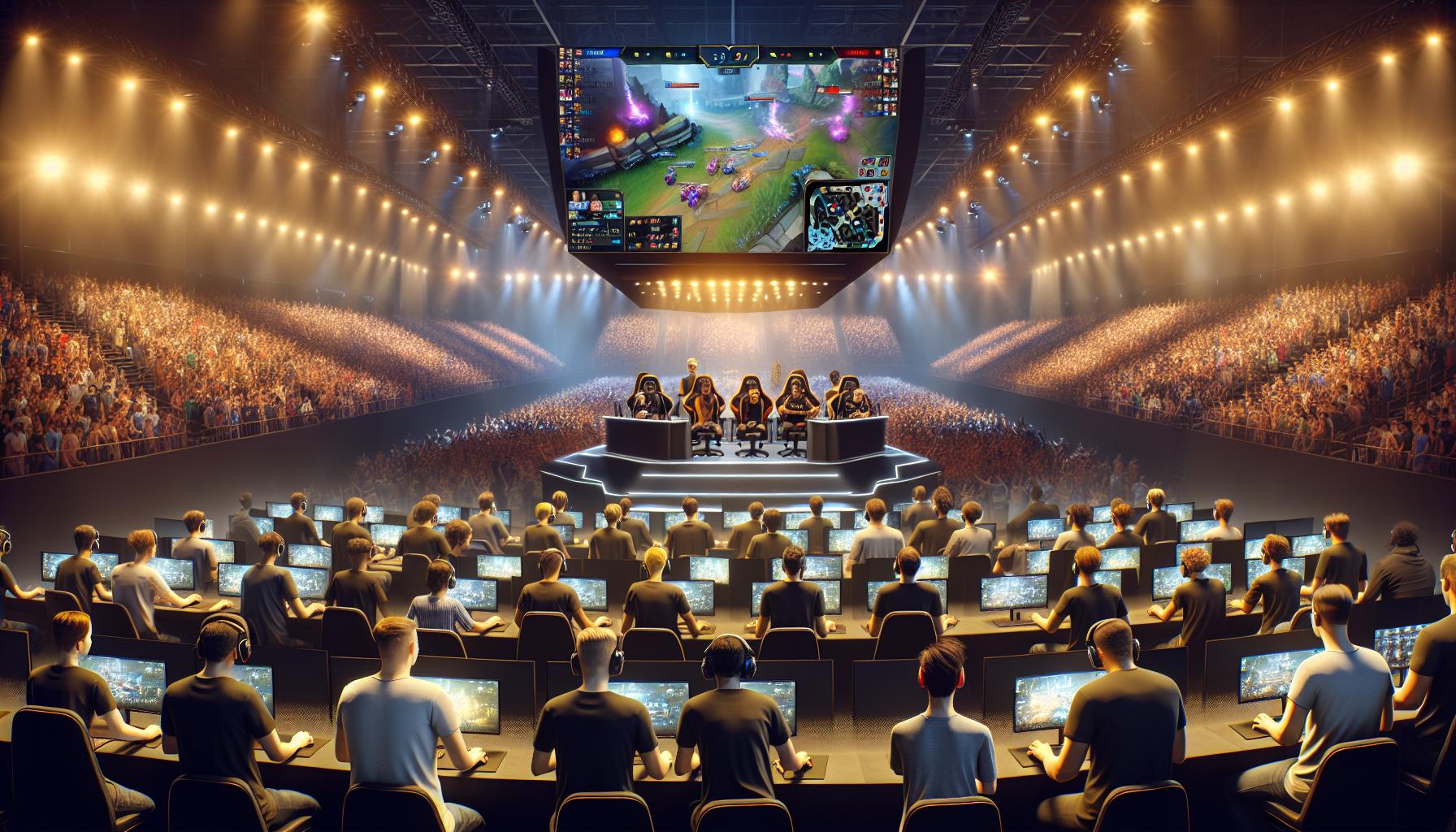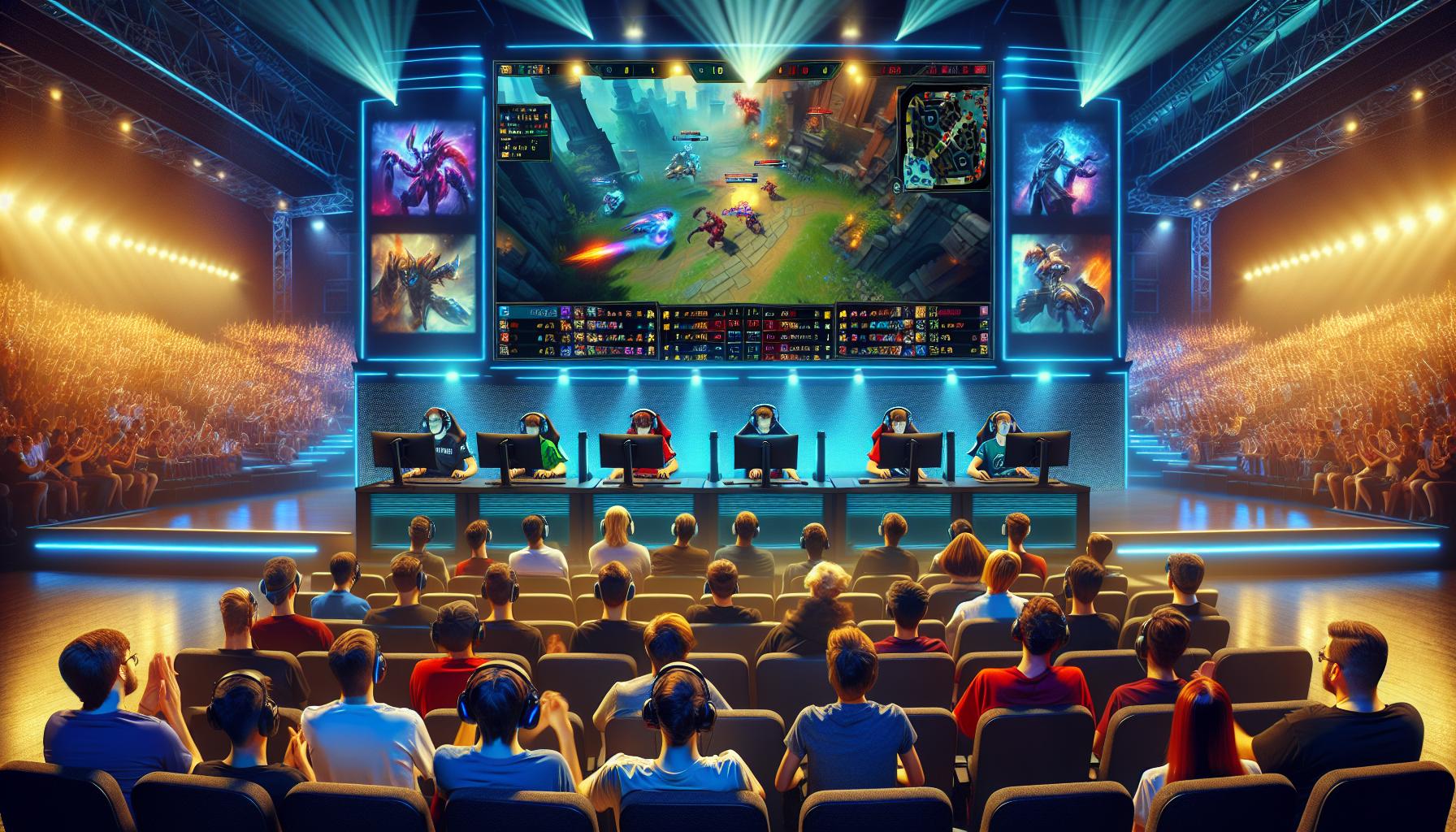Key Takeaways
- Roots and Evolution: Esports originated from casual gaming in the 1970s and has evolved into a globally recognized competitive phenomenon, with early arcade tournaments setting foundational milestones.
- Technological Advancements: The 1990s marked a significant shift with the emergence of online multiplayer games, transforming local competitions into organized esports environments and popularizing global tournaments.
- Professionalization and Legitimacy: The establishment of professional esports organizations in the 2000s legitimized competitive gaming, attracting sponsorships and increasing player visibility while bridging gaps with mainstream culture.
- Streaming Revolution: Platforms like Twitch revolutionized audience engagement in the 2010s, enabling extensive viewership and interactivity, which further solidified esports’ status as a mainstream entertainment medium.
- Diverse Genre Appeal: Esports now encompasses a wide range of game genres, including battle royales and MOBAs, appealing to varied audiences and fostering unique competitive styles.
- Future Growth Potential: The esports industry is projected to surpass $1.5 billion by 2023, driven by increased investment, diverse audience demographics, and advancements in technology and education within the field.
Esports has transformed from casual gaming into a global phenomenon, captivating millions and generating billions in revenue. As competitive gaming continues to evolve, understanding its history offers valuable insights into its rise and cultural impact.
From the early arcade tournaments in the 1970s to today’s massive international events like The International and League of Legends World Championship, the timeline of esports is rich with milestones that shaped the industry. Each era brought innovations, technological advancements, and a growing community that paved the way for professional gaming as we know it.
Exploring this timeline reveals not just the games that defined generations but also the players and organizations that pushed the boundaries of what esports can achieve. Join the journey through the vibrant history of esports and discover how it became a staple of modern entertainment.
Esports History Timeline
Esports traces its roots back to the early days of gaming, where casual play evolved into organized competition. These formative years laid the groundwork for the vibrant industry recognized today.
The Emergence of Competitive Gaming
Competitive gaming emerged in the early 1970s as gamers sought a broader sense of community and rivalry. The 1972 game “Spacewar!” hosted one of the first known tournaments at Stanford University, attracting attention and participants. College campuses became hotspots for early competitive gaming, with players gathering to challenge each other in multiplayer games on mainframe computers. As technology evolved, so did the format of competitive gaming, shifting from local contests to larger-scale competitions.
Key Milestones in the 1970s and 1980s
The 1970s and 1980s marked crucial milestones in the evolution of esports. Significant events during this period include:
| Year | Event |
|---|---|
| 1972 | First known tournament for “Spacewar!” |
| 1980 | “Atari’s Space Invaders Championship” launched, drawing thousands of participants. |
| 1983 | The “Frequency” gaming magazine hosts competitive events, popularizing arcade contests. |
| 1985 | “The Golden Age of Video Games” begins, with popular arcade games sparking local competitions. |
These early tournaments not only highlighted emerging competitive spirit but also fostered a sense of community among gamers, planting the seeds for future esports growth.
Growth and Popularity in the 1990s

The 1990s marked a significant era for esports, characterized by the emergence of online multiplayer games and substantial tournament growth. This decade solidified the foundation for competitive gaming and expanded its reach beyond local arcades.
Development of Online Multiplayer Games
Development of online multiplayer games transformed the gaming landscape in the 1990s. Titles like Doom (1993) introduced deathmatch modes, allowing players to compete globally. Warcraft II (1995) built on this trend, incorporating competitive online play through services like Battle.net. These advancements fostered community-driven competitions, guiding the transition from traditional gaming to an organized esports environment.
The Rise of Major Tournaments
The rise of major tournaments in the 1990s set the stage for esports legitimacy. The Cyberathlete Professional League (CPL), founded in 1997, organized tournaments for games like Quake and attracted professional players. The Electronic Sports World Cup (ESWC) launched in 2003, showcasing international competition and elevating event visibility. Prize pools increased, often exceeding $100,000, drawing mainstream media attention. These events sparked professional gaming careers, further legitimizing esports in popular culture.
The 2000s: A Major Turning Point

The 2000s marked a pivotal era in esports, characterized by the establishment of professional organizations and a significant expansion into mainstream culture. This decade laid the foundation for the modern esports industry, driving growth and recognition across various platforms.
Establishment of Professional Esports Organizations
Professional esports organizations began forming in the early 2000s, setting the stage for structured competitive gaming. Notable entities like Team 3D and Fnatic emerged, providing players with support, sponsorship, and recruitment. These organizations often fielded teams in popular games such as Counter-Strike and StarCraft, driving the level of competition and professionalism.
The formation of leagues like the World Cyber Games in 2000 and the Electronic Sports League in 2002 played a crucial role. These leagues not only hosted international tournaments but also promoted player development and talent scouting. Participation in these leagues brought increased visibility to esports, attracting sponsorships and investment that fueled the industry’s growth.
Expansion into Mainstream Culture
The 2000s witnessed a significant crossover of esports into mainstream culture. Major media networks began airing tournaments, drawing an audience beyond dedicated gamers. In 2003, the inaugural Championship Gaming Series featured matches broadcast on television, introducing esports to broader audiences.
Additionally, the rise of streaming platforms, particularly Twitch, highlighted the popularity of live esports broadcasts. Twitch’s launch in 2011 followed the groundwork laid in the 2000s, but its roots trace back to early gaming streams that garnered attention. This emphasis on live commentary and interaction allowed fans to engage directly with players and events, transforming esports viewing into a community experience.
Overall, the developments in the 2000s set the stage for the esports phenomenon recognized today, bridging gaps between gaming and mainstream entertainment.
The 2010s: Global Phenomenon

The 2010s marked a pivotal era in esports, characterized by explosive growth and widespread recognition around the world. Streaming platforms fueled viewership, while significant events solidified esports’ status as a mainstream entertainment medium.
Rise of Streaming Platforms and Viewership
Streaming platforms revolutionized how audiences engaged with esports. Twitch, launched in 2011, became the leading platform for live broadcasting. It enabled gamers to share their gameplay, connect with fans, and build communities. By 2014, Twitch attracted over 100 million monthly viewers, demonstrating the platform’s immense popularity.
Other platforms, like YouTube Gaming and Facebook Gaming, emerged to enhance accessibility and competition. These platforms facilitated interactive experiences, allowing fans to chat with streamers in real-time. Esports events streamed online drew massive audiences, with several tournaments surpassing millions of concurrent viewers. The accessibility of streaming increased awareness, expanded viewership, and solidified esports as a cornerstone of modern entertainment.
Significant Events and Milestones
The 2010s featured landmark events defining the esports landscape. The League of Legends World Championship debuted in 2011, attracting over 1 million live viewers and offering a prize pool exceeding $1 million by 2015. The International, an annual Dota 2 tournament, broke records with a prize pool exceeding $40 million in 2021, showcasing the financial viability of esports competitions.
Major franchises like Overwatch League, launched in 2018, introduced city-based teams, echoing traditional sports structures. The Evolution Championship Series (Evo) continued to celebrate fighting games, further diversifying the esports spectrum. Additionally, universities began to offer esports scholarships, increasing participation and awareness among students, thus furthering the growth of a competitive environment.
These milestones underscored esports’ maturation and significance, confirming its status as a global phenomenon and driving investment, sponsorship, and media coverage.
The Current Landscape of Esports
Esports has evolved into a multifaceted industry, with numerous trends and innovations shaping its trajectory. Understanding these dynamics offers insight into its current and future potential.
Trends and Innovations in the Industry
- Diverse Game Genres: Popularity spans across various genres, including battle royale titles like Fortnite, multiplayer online battle arena (MOBA) games such as League of Legends, and first-person shooters like Counter-Strike: Global Offensive. Each genre attracts dedicated communities and unique tournament styles.
- Increased Sponsorships: Major brands recognize the esports audience’s value, leading to partnerships and sponsorships with organizations and tournaments. This influx of funds boosts player salaries and overall prize pools, enhancing competitiveness.
- Professionalization of Players: Players now approach gaming with the same commitment as traditional athletes. Many engage in rigorous training regimens and rely on coaches, nutritionists, and analysts to improve their performance.
- Streaming and Content Creation: Platforms like Twitch and YouTube Gaming foster new forms of entertainment, allowing players to stream live content and create engaging videos. This trend builds personal brands, drawing fans and sponsors.
- Expanding Audience Demographics: Audiences stretch beyond traditional gaming fans, with significant engagement from demographic groups such as women and older adults. This increase signals a broader cultural acceptance of esports.
- Continued Growth: Projections estimate the global esports market to surpass $1.5 billion by 2023. Growth stems from increased investment in infrastructure, rising viewership, and expanded event offerings.
- Integration with Traditional Sports: Crossovers between esports and traditional sports are likely to expand, with events and teams integrating esports into their fabric. Partnerships have formed, showcasing the potential for shared audiences.
- Increased Regulation: As the industry matures, greater regulation is expected, particularly concerning player contracts and tournament fairness. This oversight will enhance professionalism and player rights.
- Technological Advancements: Innovations in virtual reality (VR) and augmented reality (AR) promise to elevate the viewing experience, providing immersive environments that engage fans and enhance gameplay.
- Educational Initiatives: Universities are growing esports programs and offering scholarships, legitimizing esports as a pathway for students. This trend encourages talent development and provides career opportunities within the industry.
Esports has undeniably transformed from its humble beginnings into a global powerhouse
Esports has undeniably transformed from its humble beginnings into a global powerhouse. The journey through its history reveals a tapestry of innovation and community that continues to shape the gaming landscape. As technology advances and audiences grow, esports is poised for even greater heights. The blending of gaming with mainstream culture has created a vibrant ecosystem that attracts diverse participants and fans alike. With projections indicating substantial market growth and increased legitimacy, the future of esports looks bright. It’s an exciting time for both players and enthusiasts as they witness the evolution of this dynamic industry.